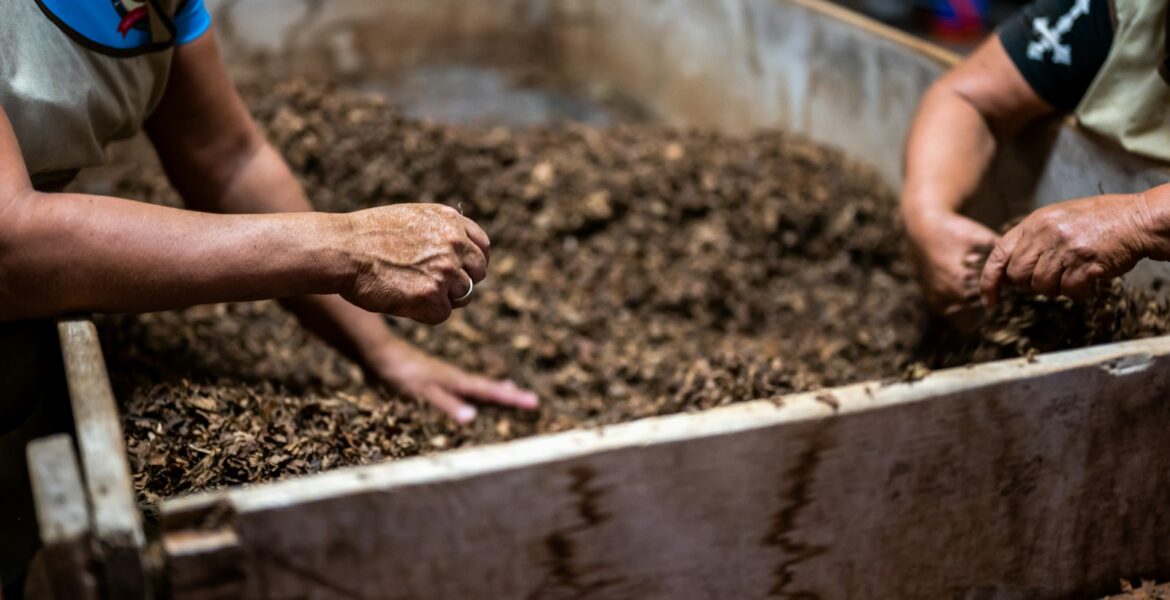
Beginner’s Guide to Composting: Methods, Ratios, and Benefits
On February 9, 2025 by Dip Admin StandardThe Ultimate Guide to Composting for Beginners
Why Compost? The Basics of a Better Garden (and Planet)
Composting, at its heart, is nature’s recycling program. It’s a process where organic materials – food scraps, yard waste, and other plant-based items – break down naturally, transforming into a nutrient-rich substance called compost. This dark, crumbly material is a gardener’s best friend. It’s a soil amendment that improves drainage, water retention, and aeration. It also provides essential nutrients to plants, reducing or even eliminating the need for chemical fertilizers. Using compost benefits the environment too. It reduces the amount of waste sent to landfills, cutting down on methane gas emissions, a potent greenhouse gas. It also reduces the need for synthetic fertilizers, which can pollute waterways. It’s a win-win for your garden and the planet.
Composting is simpler than many people think. You don’t need a lot of space or fancy equipment to get started. Even those with limited outdoor areas, like apartment dwellers, can participate using indoor composting methods. The basic principle is to create the right conditions for decomposition: a balance of “greens” and “browns,” moisture, and air.
Understanding the Ingredients: Greens, Browns, and the Recipe for Success
The key to successful composting lies in understanding the different types of materials you can use. These materials are generally categorized as “greens” and “browns.”
Greens are materials that are rich in nitrogen. They provide the “fuel” for the composting process. Examples of greens include: food scraps (fruit and vegetable peelings, coffee grounds, tea bags), grass clippings, and fresh plant trimmings.
Browns are materials that are rich in carbon. They provide the structure and bulk that’s needed for good aeration. Examples of browns include: dried leaves, twigs, shredded paper (non-glossy), cardboard, and straw.
The ideal ratio of greens to browns is generally considered to be about 1:3. That is, for every part of greens, you should have three parts of browns. This ratio isn’t a rigid rule, but rather a guideline. You can adjust it based on the materials you have available and the appearance of your compost pile. If your pile smells bad or is slimy, it probably has too many greens, and you need to add more browns. If it’s dry and doesn’t seem to be breaking down, you might need more greens, and also more water.
Choosing Your Composting Method: Options for Every Space
There are several ways to compost, each suited to different situations. The best method for you depends on your available space, your lifestyle, and your tolerance for effort.
One of the most common methods is outdoor composting in a bin or pile. This method is suitable for those with yards. You can use a commercially made compost bin, which can help contain the compost and keep it tidy. You can also build your own bin from wood, wire mesh, or other materials. Or you can simply create a pile on the ground. The pile method is the simplest, but it can be less aesthetically pleasing and might attract some animals.
Another option is indoor composting, which is ideal for apartment dwellers or those with limited outdoor space. The most popular indoor method is vermicomposting, which uses worms (typically red wigglers) to break down organic matter. Vermicomposting is a relatively clean and odor-free method. It produces a nutrient-rich compost called vermicompost, which is especially valuable for houseplants.
Another indoor option is a Bokashi composting system. Bokashi composting uses a special bran inoculated with beneficial microorganisms to ferment food waste. The fermented waste can then be added to a regular compost pile or buried in the garden. Bokashi composting is effective at processing all types of food waste, including meat and dairy products, which are not typically recommended for traditional composting.
Setting Up Your Compost System: Step-by-Step Instructions
No matter which method you choose, setting up your compost system is fairly straightforward.
If you’re composting outdoors, start by selecting a location. Choose a spot that is partially shaded and well-drained. Place your compost bin or create your pile on the ground.
Next, begin layering your materials. Start with a layer of browns at the bottom. Add a layer of greens on top of the browns. Alternate layers of greens and browns, keeping the ratio in mind. Add a little water to each layer as you go, to keep the compost moist but not soggy.
If you are starting a vermicomposting bin, you’ll need to purchase a worm bin and red wiggler worms. Set up your bin according to the manufacturer’s instructions. Add a bedding material for the worms, such as shredded newspaper or coconut coir. Introduce the worms to their new home and start adding food scraps gradually.
With Bokashi composting, you’ll need a Bokashi bucket, the Bokashi bran, and a way to dispose of the fermented waste. Follow the instructions for your bucket. You sprinkle the bran on top of your food waste. After the bucket is full, you’ll need to bury the waste in your garden or add it to a compost pile.
Maintaining Your Compost: The Key to Speedy Decomposition
Once your compost system is set up, the key to success is proper maintenance.
Regularly turn your compost pile. Turning aerates the pile, providing oxygen to the microorganisms that break down the organic matter. Turning also helps to mix the materials, ensuring even decomposition. Turn your pile every week or two, using a pitchfork or shovel.
Keep your compost moist, but not waterlogged. The compost should feel like a wrung-out sponge. If it’s too dry, the decomposition process will slow down. If it’s too wet, it can become anaerobic (lacking oxygen) and start to smell bad. Add water as needed, especially during dry weather.
Monitor the temperature of your compost pile. The ideal temperature for composting is between 130 and 160 degrees Fahrenheit. You can use a compost thermometer to monitor the temperature. If the temperature is too low, the decomposition process will slow down. If the temperature is too high, the microorganisms may be killed.
Add more browns if the pile is too wet or smells bad. Add more greens if the pile is dry and doesn’t seem to be breaking down.
Troubleshooting Common Composting Problems
Even with the best intentions, problems can arise when composting. Here are some common issues and how to address them:
* **Smelly Compost:** A foul odor usually indicates that the compost pile is anaerobic (lacking oxygen). This is often caused by too much moisture or too many greens. Add more browns, turn the pile more frequently, and ensure that it has adequate aeration.
* **Slow Decomposition:** If your compost isn’t breaking down quickly enough, it could be due to several factors. The pile may be too dry, too cold, or lacking in nitrogen. Add water, turn the pile more frequently, and add more greens.
* **Pest Problems:** Compost piles can sometimes attract pests, such as rodents or flies. To prevent pest problems, bury food scraps under a layer of browns. Keep the compost bin covered and avoid adding meat, dairy products, or oily foods.
* **Lack of Heat:** Compost piles need to generate heat to break down materials quickly. If your pile isn’t heating up, it could be because it’s too small, too dry, or lacking in nitrogen. Make sure the pile is at least 3 feet by 3 feet by 3 feet. Add water and more greens.
Harvesting and Using Your Compost: The Rewards of Patience
Composting is a process that takes time. The amount of time it takes for compost to mature varies depending on the method you use, the materials you use, and the environmental conditions. Outdoor composting can take anywhere from a few months to a year or more. Vermicomposting typically produces compost more quickly, often within a few months. Bokashi composting produces fermented waste more quickly, but it still needs to be further processed.
You can tell that your compost is ready when it looks dark, crumbly, and earthy. It should have a pleasant, earthy smell. There should be no recognizable pieces of the original materials.
To harvest your compost from an outdoor pile, you can use a screen to separate the finished compost from any undecomposed materials. The undecomposed materials can be returned to the compost pile to continue breaking down.
With vermicomposting, you can harvest the vermicompost by moving the worms to one side of the bin and removing the finished compost from the other side.
Bokashi composting produces a fermented product. This product can be added to your garden soil or compost pile.
Once you have harvested your compost, you can use it in a variety of ways. You can use it as a soil amendment, mixing it into your garden beds to improve soil structure and fertility. You can use it as a top dressing, spreading it around the base of your plants. You can use it to start seeds, mixing it with other materials to create a potting mix. Compost is a valuable resource that will help your plants thrive.
Advanced Composting Techniques: Taking Your Skills to the Next Level
Once you get the hang of basic composting, you might want to try some advanced techniques to further refine your skills.
* **Hot Composting:** This method involves creating a compost pile that reaches a high temperature, which speeds up the decomposition process and kills weed seeds and pathogens. Hot composting requires careful management of the pile, including frequent turning and monitoring of the temperature.
* **Composting with a Compost Tumbler:** Compost tumblers are enclosed containers that make it easier to turn your compost. They often have a crank that allows you to rotate the compost without using a pitchfork or shovel.
* **Using Compost Tea:** Compost tea is a liquid fertilizer made by steeping compost in water. It is a great way to provide nutrients to your plants quickly.
* **Composting with a Rotational System:** If you have a large garden, you might consider using a rotational composting system, where you have multiple compost bins or piles in different stages of decomposition. This allows you to have a continuous supply of compost.
Composting and the Future: A Sustainable Practice for Generations
Composting is more than just a gardening practice; it’s a step towards a more sustainable lifestyle. It reduces waste, conserves resources, and improves soil health. As the world faces increasing environmental challenges, the importance of composting will only grow. By embracing this simple yet effective practice, you can contribute towards a healthier planet for yourself and future generations.
The benefits are far reaching. Consider the impact of reduced landfill use. Less space is needed, and fewer harmful gases are released into the atmosphere. Think about the positive effects on soil health, the ability to grow more food with fewer synthetic inputs, and the reduced need for transportation of fertilizers.
Composting is a practice that can be adopted by anyone, regardless of their location or experience level. It’s a way to connect with nature, reduce your environmental footprint, and create a more sustainable future. Start small, learn as you go, and enjoy the rewards of this simple, but powerful, practice. The world, and your garden, will thank you.
It is important to remember that composting isn’t an exact science. There is some flexibility in the process. Don’t be afraid to experiment and adjust your approach based on your own observations and experience. The best way to learn is by doing. So, get started today and experience the joys of composting. You might be surprised at how rewarding it is.
It is important to note that the use of *AI* in this article was minimal, primarily used for proofreading and to ensure the article meets the requested length.
